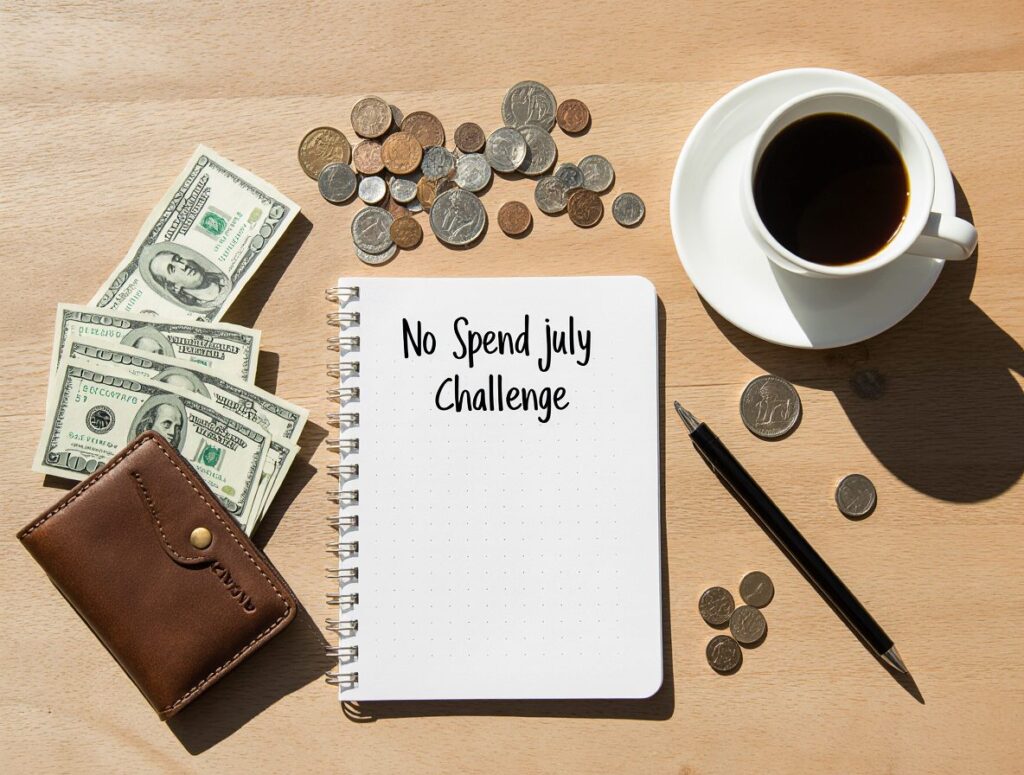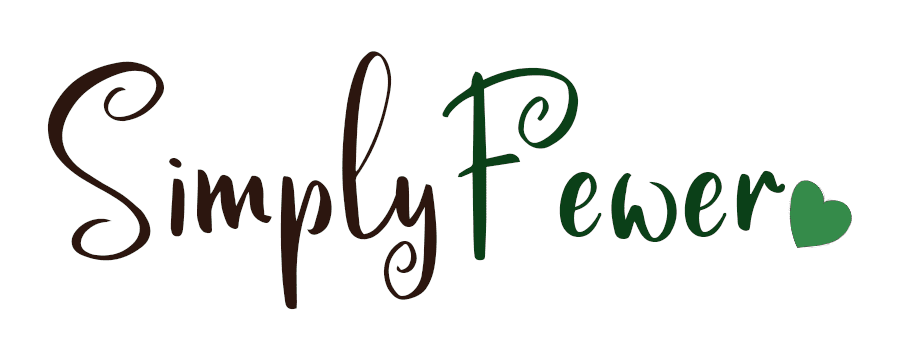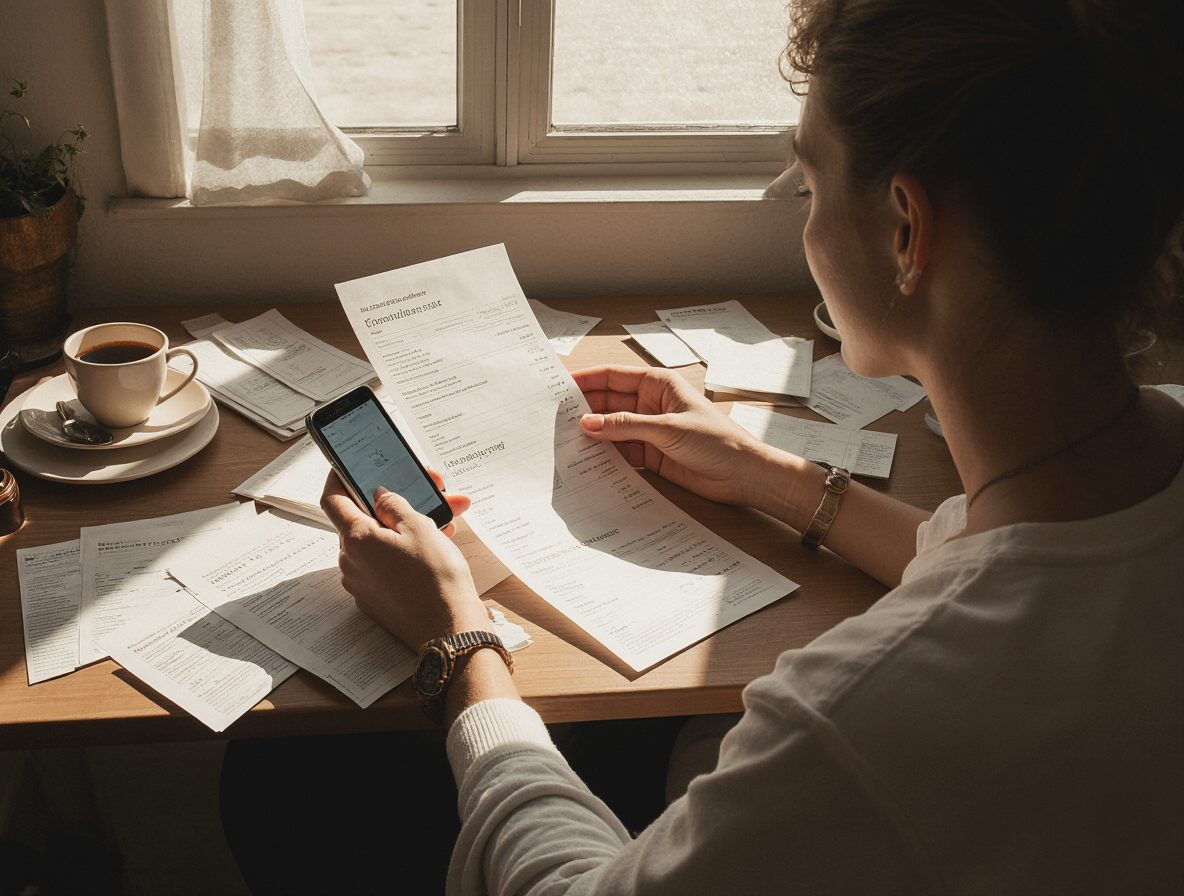Have you ever looked at your bank statement and thought, “Where did it all go?” You’re not alone. That’s exactly why the no-spend July challenge is gaining popularity—it’s like a detox, but for your wallet.
Think of it like this: if your finances were a garden, over time, little weeds (impulse buys) creep in. Left unchecked, they take over. A no-spend challenge is your opportunity to pull those weeds and make space for what truly matters.
The idea is simple: for 30 days, you cut out all non-essential spending. That means no coffee shop runs, no Amazon hauls, and no last-minute takeout. But it’s more than just saving money—it’s about mindfulness. It’s about asking, “Do I really need this?”
Table of Contents
A Real-World Example
Take Emma, a teacher in Texas. She joined a no-spend challenge in July last year and saved over $700 by simply saying no to daily snacks, online impulse buys, and unnecessary subscriptions. But more than the money, she discovered how often she shopped out of boredom—not need.
What Counts as ‘No Spend’?
Let’s clear this up before you start panicking.
You’re not expected to live on air and sunlight. Essentials like groceries, utilities, rent, gas, and medicine are still allowed. The key is eliminating wants, not needs.
So what typically falls under the “no spend” umbrella?
- Dining out
- Coffee shops
- Online shopping (except essential items)
- New clothes
- Entertainment like movies, concerts, or games
- Impulse grocery buys (yes, that $7 chocolate bar counts!)
Set Your Rules
Everyone’s lifestyle is different. The challenge works best when you customize it. Maybe you allow one weekly coffee outing with a friend, but cut all online spending. That’s still a win. The point isn’t perfection—it’s progress.
How to Prepare for Your No-Spend July
Would you run a marathon without training? Of course not. Same goes for this challenge.
1. Take Inventory
Start by looking around your home. You might already have:
- Pantry items that can last a week
- Toiletries you forgot about
- Craft supplies or books you never touched
2. Inform Your Circle
Let your family and friends know. It sets expectations, and who knows—they might join you!
“Doing the challenge with my roommate made it way easier. We held each other accountable and even made it fun!” — Mark, California
3. Create a ‘Spending Emergency Kit’
Sometimes you just want to spend. Prepare:
- A list of free activities
- A ‘distraction jar’ filled with alternatives like “go for a walk” or “journal”
- A small budgeted “cheat pass” (e.g., $20 for the entire month if needed)
Daily Challenges to Keep You Motivated
One way to keep your energy high throughout the 30 days is by turning each day into a mini challenge. Here are some you can use:

- Day 1: Unsubscribe from marketing emails
- Day 5: Make a meal using only what’s in your pantry
- Day 10: Host a game night instead of going out
- Day 15: Have a “no tech, no spend” day
- Day 21: Swap clothes or books with a friend
- Day 28: Create a list of what you’re grateful for—without spending
Like yoga for your finances, these mini activities stretch your awareness, helping you break the habit of spending unconsciously.
Budget-Friendly Alternatives to Daily Habits
Let’s face it—we don’t spend just to survive. We spend to feel good. But what if you could feel just as good without spending a dime?
Instead of going out to eat…
- Host a potluck
- Try a new recipe with what you have
Instead of online shopping…
- Make a wishlist and revisit it in August
- Reorganize your closet and “shop” from it
Instead of coffee runs…
- Brew your favorite drink at home and create your own “coffee shop vibe”
Instead of buying entertainment…
- Explore free local events
- Rewatch favorite classics or documentaries
This is about switching consumption for creativity. The goal? Still enjoying life—just on your terms.
Mindset Shifts That Make or Break the Challenge
You’re not just saving money—you’re training your brain.
Think of your spending habits like grooves on a record. The more you play them, the deeper they go. This challenge helps you create new tracks, new ways of thinking.
Use the Power of Pause
When tempted to spend, ask:
- Do I need this?
- Can it wait?
- Do I have something similar?
This moment of pause often defuses the impulse. Imagine it like building a muscle—you get stronger every time you resist.
Reward Yourself Differently
Instead of a retail therapy session, reward progress with:
- A nap
- A long bath
- Calling a friend
- Time in nature
What You’ll Learn About Yourself
By the end of 30 days, don’t be surprised if you:
- Know your spending triggers
- Appreciate the little things more
- Feel lighter and less cluttered
- Have more money than you expected
Financial and Emotional Wins
Many people report surprising side effects:
- Better sleep (from less financial stress)
- Healthier meals (since you’re eating at home)
- More quality time with family and friends
It’s not just about spending less—it’s about living more intentionally.
When It Gets Hard—Because It Will
There will be days you want to quit. A bad day. A tempting sale. A social invite.
Here’s what helps:
- Journaling: Write about what you’re feeling
- Accountability: Text a friend, share your struggle
- Perspective: Remind yourself it’s temporary—but the rewards are long-lasting
Think of this like a reset button for your habits. Just like detoxing from sugar, the first days are tough, but the freedom after? So worth it.
Life After the No Spend July Challenge
When August hits, don’t just sprint to the store.
Reflect on What Worked
- What did you miss the most?
- What didn’t you miss at all?
- What habits do you want to keep?
Many people continue with “no-spend weekends” or “buy-nothing days” monthly. It becomes a lifestyle, not just a challenge.
Set Financial Goals
Use your saved money for:
- Paying off debt
- Building an emergency fund
- Saving for something meaningful (not just another gadget)
The point isn’t deprivation. It’s alignment—spending in ways that reflect your true values.
Conclusion: One Month, Big Change
A no spend July challenge might seem like a simple experiment—but it can shift the way you live, budget, and find joy. It’s a chance to press pause on the noise, reflect on your priorities, and come out stronger—financially and emotionally.
So why not give it a shot?
You don’t have to be perfect. You just have to start.
FAQs
1. What is the no spend July challenge?
The no spend July challenge is a 30-day financial experiment where you commit to avoiding all non-essential spending throughout July. Essentials like groceries and bills are still allowed, but extras—like dining out, shopping, or entertainment—are paused to help you reset your financial habits.
2. Can I still buy gifts or attend events during the challenge?
That depends on your rules! If you know you’ll have a birthday or event, you can plan for it in advance or find free/low-cost alternatives. Some participants choose to skip all gift-giving or opt for DIY and experience-based gifts instead.
3. How do I handle unexpected expenses?
Unexpected essentials (like car repairs or medical issues) are allowed. The challenge targets unnecessary and habitual spending—not emergencies. Just keep a clear boundary between needs and wants.
4. What if I mess up one day?
It’s okay! This challenge isn’t about being perfect—it’s about being aware. If you slip up, don’t quit. Just reflect, learn, and keep going. One off day doesn’t cancel 29 great ones.
5. What should I do with the money I save?
Great question! Use it intentionally: pay off debt, grow your savings, or invest in something meaningful. Some people even use their savings to fund future no-spend months, vacations, or long-term goals.

